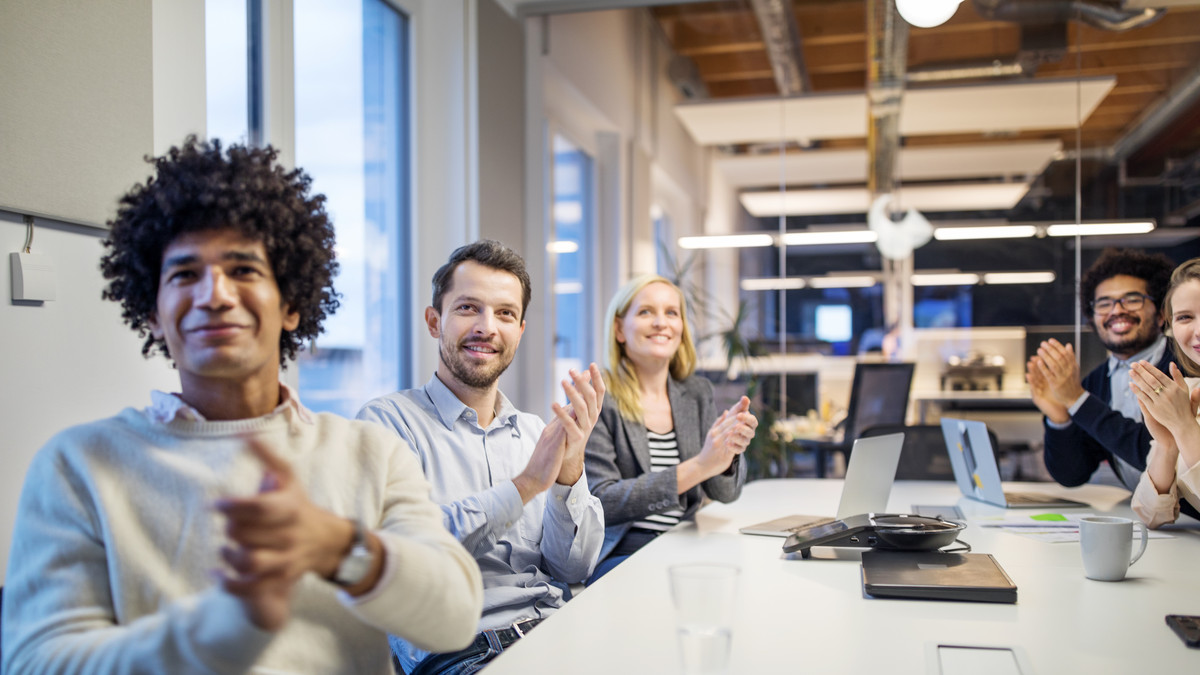Even as the pandemic fades into the background noise of urban life, white-collar offices are still reckoning with its near-fatal disruption. Emptied for months or years, some offices are only just beginning to repopulate with hybrid work schedules, and many leaseholders have cut bait completely, abandoning their brick-and-mortar cubicle clusters for Zoom-and-sofa remote “workstations.”
But the office is far from dead.
Data from the commercial real estate security company Kastle shows that office occupancy has been on a steady growth curve since the initial lockdowns of early 2020. Occupancy is now about half of what it was pre-pandemic. While it may never again return to pre-pandemic levels, physical office space remains a part of the way many companies do business. And even if workers have gotten accustomed to doing their jobs from the comfort of home, many say they still want to go to the office to get some actual focused work done.
What can or should the office look like going forward? After asking four office designers to offer a glimpse at what the workplace can be in 2023, we have one word for you: “WorkResort.”
The year of the custom office
“I feel the usefulness of the office right now is in providing that protected space to dream big. In design the spaces need to be original thoughts themselves. They need to be sculpted around something about the occupant. This is going to be the year of the custom office — personalized to the degree that people feel, “This speaks to me. This is talking my language.” I think people will respond to that more readily than a themed environment. That doesn’t mean the Metaverse won’t be a place, because it will be. It doesn’t mean the coffee shop down the street won’t be a place, because it will be. Or a park bench with sunlight falling on it. It’s a choice. And the office still has a lot to do with that choice.” —Primo Orpilla, Studio O+A
Wellness makeover
“While many organizations are downsizing office space, some are also reconfiguring for increased flexibility and higher performance. Companies are adjusting space ratios of assigned-to-shared seating, amenities, and hybrid work environments to reflect their evolving culture. Embedded technology for telepresence alongside enhanced features for in-person activity is key. As the office footprint reduces, it is also undergoing a wellness makeover. Connections to nature, access to fresh air and daylight, [and] ease of user-operability are some of the basic universal principles supporting wellness in the workplace. Underutilized office buildings are being transformed to support myriad other uses such as life science, R&D, manufacturing, and even housing. The process of adaptive reuse has the potential to make downtown areas more multivalent, improving livability and reducing traffic.” —Wright Sherman, WRNS Studio
AI-assisted designs
“Companies recognize the importance of flexibility and workplace diversity, equity, and inclusion. In 2023, adaptability and AI-assisted designs will play a key role in addressing these concerns while also providing new opportunities to create remarkable spaces that maximize workplace efficiency and collaboration. These future spaces will also accommodate hybrid work concepts, seamless use of technology, [and] company culture and guidelines. All of this will be led by data-driven decisions and the design team’s ability to strategize with the end-users, which will create environments everyone will be drawn to.” —Nena Martin, Gensler
Enter the “WorkResort”
“We are designing a new office prototype that ensures everyone will not only be productive but [also] develop a career full of great personal purpose — a place that inspires hard work while respecting personality, and locations that put community ahead of egotism. We call it the ‘WorkResort.’ Inside, employees check in with a concierge, who suggests how best to navigate the hours ahead. There are multiple options for working: ‘villas’ for brainstorming sessions and ‘cabins’ when someone needs to concentrate. Lounges and balconies promote impromptu exchanges, while meditation and activity spaces provide for physical and spiritual well-being. Employees will gather at a chef’s table for lunch. Maker spaces offer tools to create prototypes and pursue experiments. HWKN designed the ‘WorkResort’ for companies to attract top talent and inspire everyone to expand their minds, be original, and contribute mightily to the forward-thinking enterprises that employ them.” —Matthias Hollwich, HWKN
This article was written by Nate Berg from Fast Company and was legally licensed through the Industry Dive Content Marketplace. Please direct all licensing questions to legal@industrydive.com.
